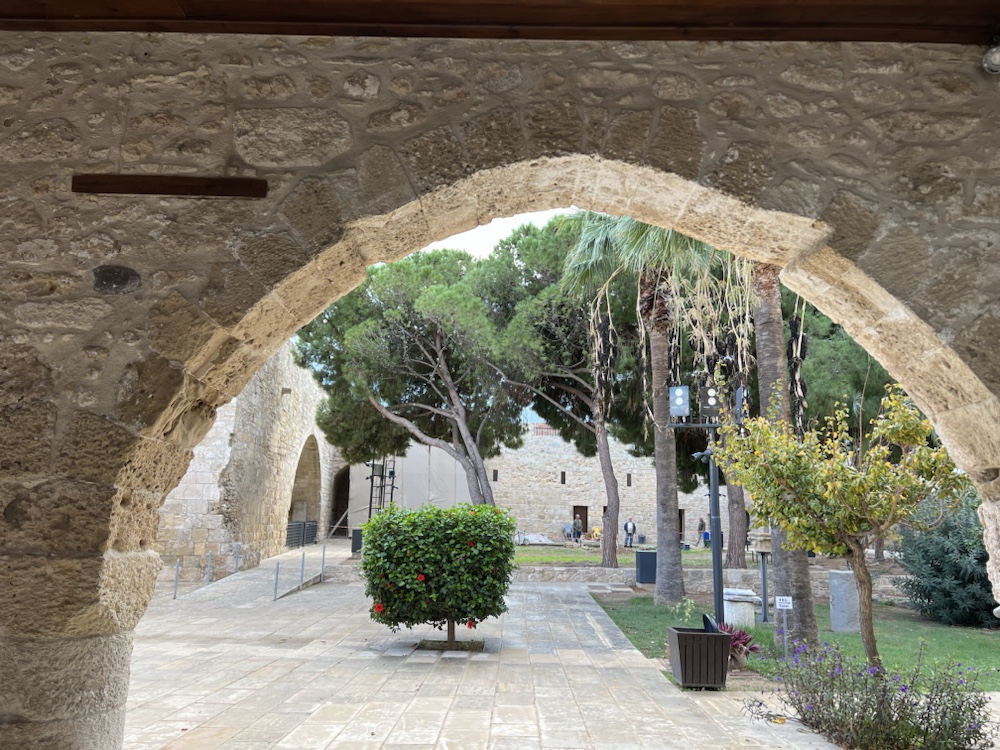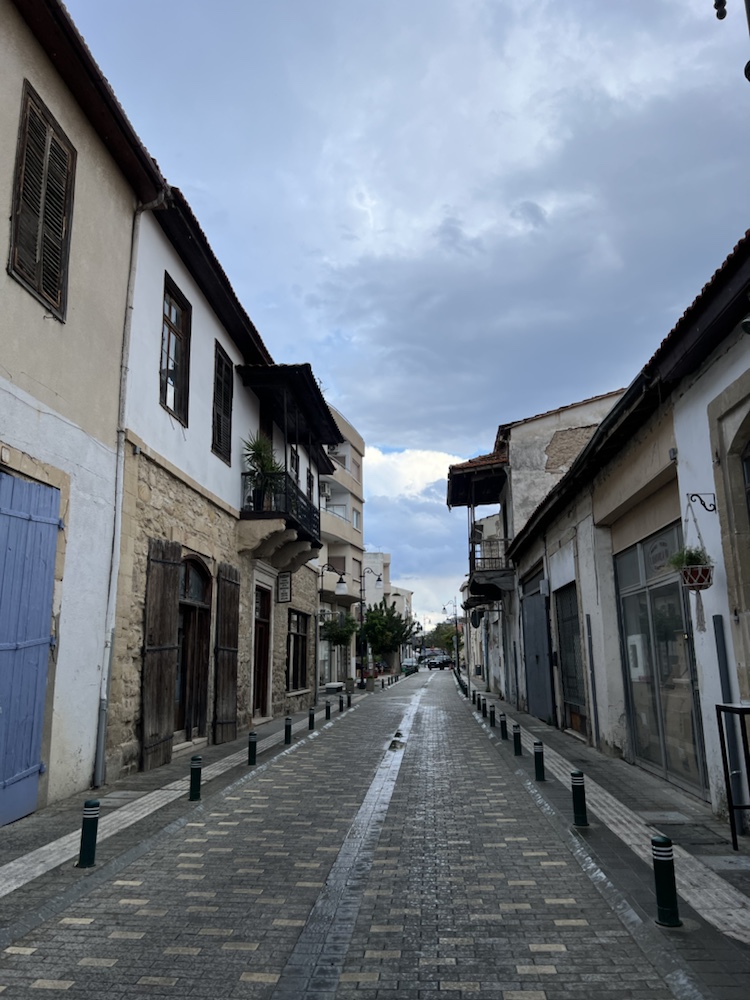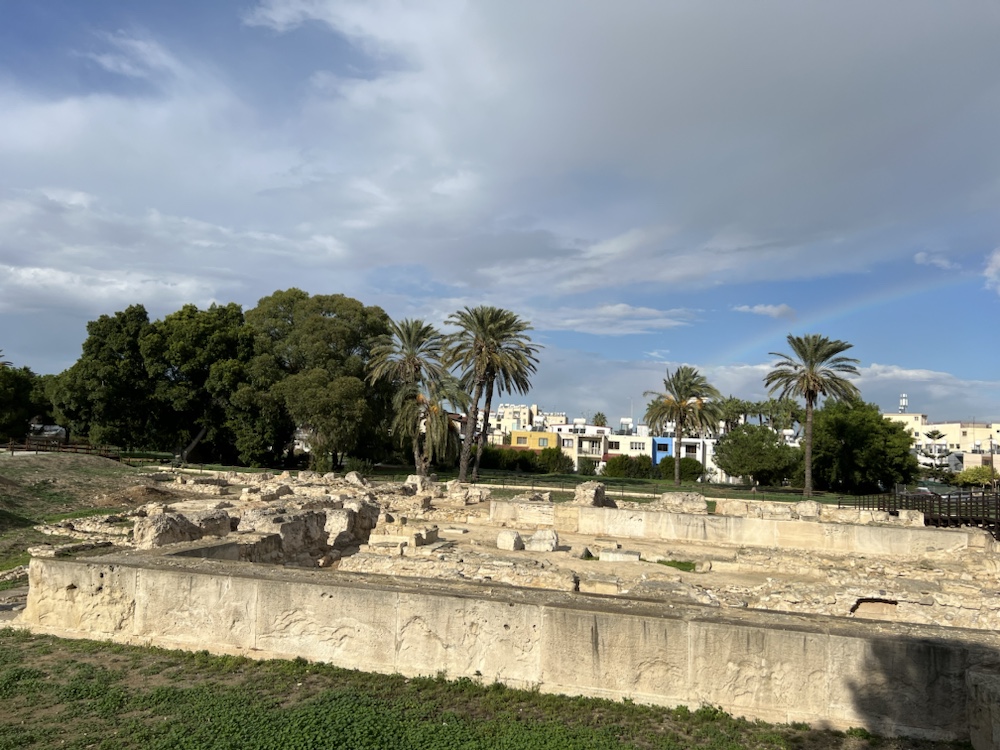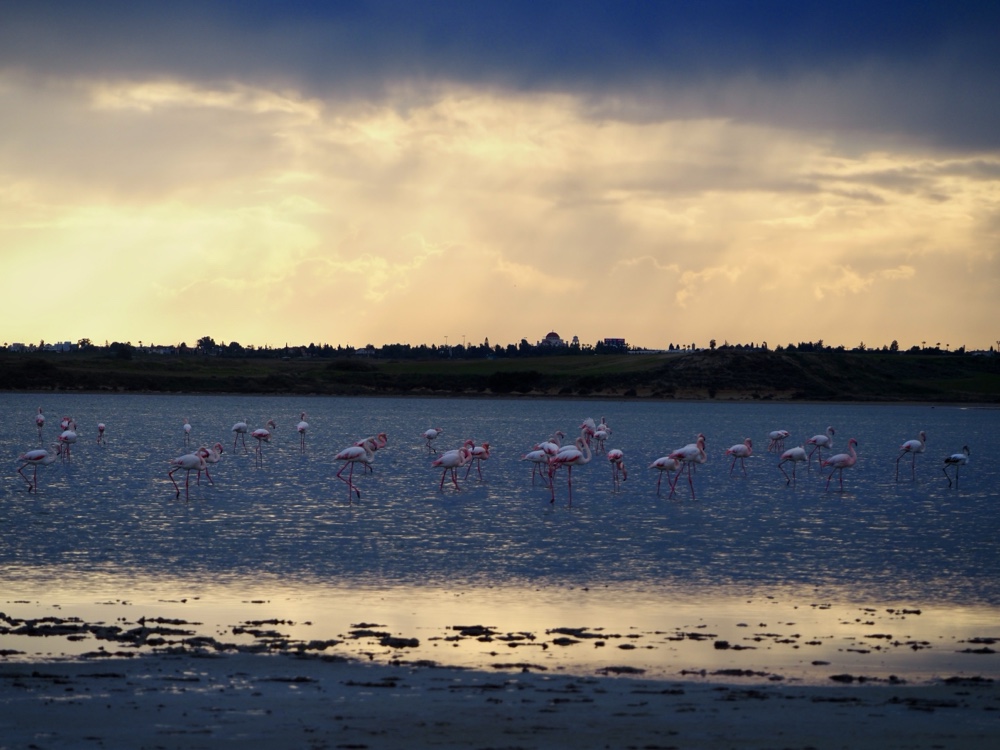
Nicosia
The city of Nicosia is really interesting and seems more polished on the Cypriot side. I walk down the main laneway through the shops to the Turkish border. It is the easiest border crossing of my life; I wait in a short line, scan my passport on both sides, then cross through. I check in at my dingy communal style hotel and set off to explore.



The old town seems a bit rundown but authentic in some way. Many more houses are in the Ottoman style. The Turkish people here saw themselves as an oppressed minority under Cypriot rule, and the Turkish occupation that invaded and took over the Northern half of Cyprus are considered “liberators.” At least according to the informational signs. Are the residents here content to be separate from the rest of Cyprus? Graffiti near the border crossing calls for “One Cyprus,” though this stance is controversial on the Turkish side.



I walk the recommended route around the Northern half of the city. The walls are Venetian but resemble Lucca’s in that they can be climbed and walked along like a park. They blend seamlessly into the city, and one end has been developed with restaurants and cafes and a park. The park is bordered by barbed wire along the border with a large UN tower, but the children play nonetheless.



There are cute alleys with Ottoman architecture that lead to the main marketplace. Doner kebabs, Turkish delights, and the smell of incense are everywhere, as are all the typical tourist traps. There is an interesting hub I suspect is a mosque, but it is really a central marketplace selling arts and crafts and a restaurant. It is called a Han, and this one was built in the 15th century. There are others that are smaller nearby, as well as mosques, although the grand mosque is under construction. The map leads me through the neighborhood and back up to the wall, so I return to the marketplace for a yummy pide, a cheesy Turkish flatbread.



Back on the Greek side, I have a classic spinach and cheese pie as I set off along the Venetian wall. There are public gardens and monuments lining the preserved segments of wall, though most has been refurbished by the British, leaving a singular entrance intact at the end. The other is under construction, unfortunately. There are lots of important buildings in this area for the archbishop, including a church and the Archbishop’s palace, housed in a recently renovated ottoman-style building. The classic ottoman alleys line most of the streets, though they are more recently renovated than the northern side.






I go up the high tower for a view and a blatantly biased history lesson from above the city. The mountains towering in the background look great despite the gloomy sky. Any mentions of a Turkish revolt shortly after the establishment of Cyprus fail to divulge that equal rights were quickly undermined by sweeping reforms to discriminate against and minoritize the Turkish inhabitants.


I continue meandering the traditional shopping area of the main street under the covered flags and mosaic walkways. Unsuccessful on this side, I cross the border to get a bamboo towel.



I watch a whirling dervish spin and twirl around. I remember learning about the Sufi ritual in my AP world civilizations class. Every step is symbolic from the dress to the movements. It is mesmerizing to watch, and he takes lots of meditative breaks between whirls (to stop from getting too dizzy, I suppose). I am dizzy just watching.


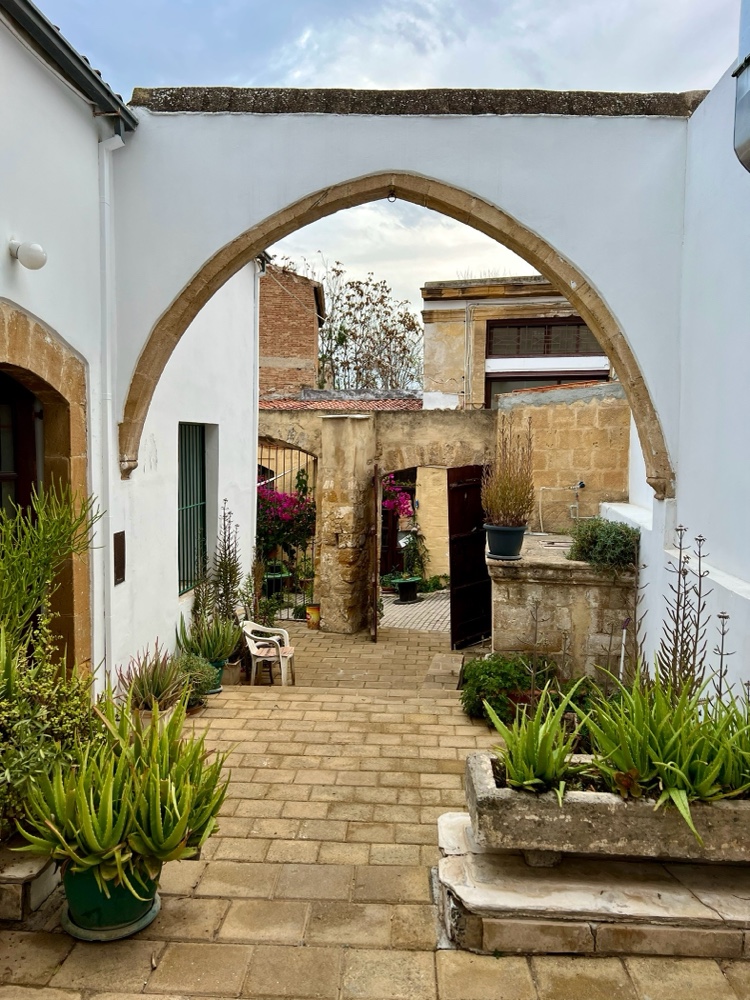
I cross back over the border for a final meal of moussaka (with the same restaurant and waiting staff that served Bill Clinton on his monumental visit to Cyprus). Clinton ordered the zucchini balls and some chips, or so I’m told by the waiter, who proudly shows me his photo with Clinton on the wall. I am treated to a mastika shot, which tastes woody and herbal like the mastic ice cream, but it is sweet. It is not so strong—I like it better than Ouzo.


I cross back one last time to the Turkish side. But not before stopping by a queer community space that caught my eye! There is an exhibit on anthologies of queer literature, including books on BDSM, military trade, and a book called Sex Ecologies that was fascinating to skim through. It reminded me of the importance of breaking the boundaries imposed by science and western patriarchy on the natural world. The lizards and birds here have no respect for a border wall.



The journey back to Paphos goes seamlessly. I chuck my luggage under the bus station info center and do some last-minute shopping around the old Paphos marketplace. I have one last souvlaki (delicious with spicy feta), my first carob ice cream, and one last bus ride to the airport for a final halloumi and pumpkin pie.





